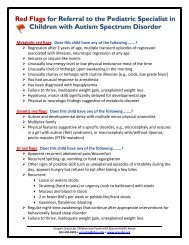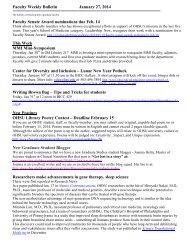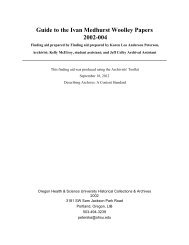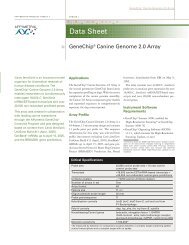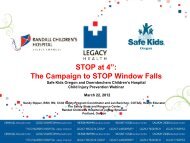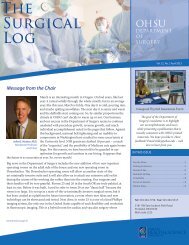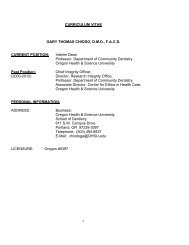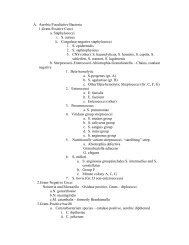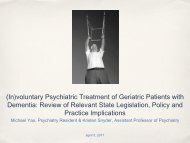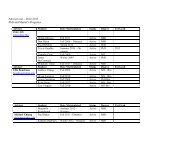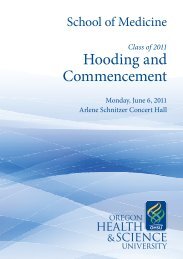Non-Invasive Prenatal Testing (NIPT) Faetsheet
Non-Invasive Prenatal Testing (NIPT) Faetsheet
Non-Invasive Prenatal Testing (NIPT) Faetsheet
Create successful ePaper yourself
Turn your PDF publications into a flip-book with our unique Google optimized e-Paper software.
<strong>Non</strong>-<strong>Invasive</strong> <strong>Prenatal</strong> <strong>Testing</strong> (<strong>NIPT</strong>) <strong>Faetsheet</strong><br />
<strong>NIPT</strong> Pertonnance Comparison<br />
Patient selection of <strong>NIPT</strong> versus other 70rms of prenatal<br />
screening or testing<br />
All forms 01 prenatal screening and testing for letal genetic conditions<br />
have benefits and limitations with respect to r:sk to the pregnancy, what<br />
can be detected, and accuracy. The selection of which screening or test-<br />
ing paradigm to use should be made in consLitation with the patient, and<br />
in keeping y,.ith her values.<br />
(SEE COMPARISON TABLE FOR SPECIFICS)<br />
<strong>NIPT</strong> healthcare costs compared to other screening and test.<br />
ing paradigms<br />
There have been limited cost.benefit analyses done thus far companng<br />
<strong>NIPT</strong> to other screening or testing alternatives. One study predicted a<br />
1% cost reduction in the detection of aneuploidy using <strong>NIPT</strong>, as well as<br />
66% reduction in procedure.related miscarriages and a 38% increase in<br />
trisomy 21 diagnoses.<br />
Counseling Women About Screeningf<strong>Testing</strong> Options<br />
Women making decisions about whether to Jndergo screening or test.<br />
ing for Down syndrome during pregnancy consider many factors in their<br />
decision - concern about having a child with an abnormality, concern<br />
about putting the pregnancy at risk for miscarriage, what they would do<br />
with the results, family values, religious beliefs, family and life situation,<br />
and others.<br />
Information used to counsel women about o:>tions should be sensitive<br />
to all of these issues and present accurate and balanced information<br />
about the risks and benefits of each screening or diagnostic testing meth-<br />
odology. Up.to-date, balanced information about what it means to have<br />
a child with one of these conditions should be available. Genetic coun-<br />
seling to help patients understand the options, including the option of not<br />
having any screening or testing at all, may be helpful to many women<br />
For women who prefer to start with screeniO'J. there is a significant<br />
difference in the predictive power of the infornation obtained from <strong>NIPT</strong><br />
as compared to other screening approaches, and this impacts pre-test<br />
counseling. Serum screening typically allows a screen-positive woman to<br />
consider whether she wants the certainty associated with the next step in<br />
the paradigm, diagnostic testing. However. the sensitivity and specificity<br />
of <strong>NIPT</strong> is close to diagnostic, and an <strong>NIPT</strong>-positive resull may imply an<br />
overwhelming likelihood of trisomy; CVS or amniocentesis are performed<br />
for confirmation.<br />
Future Directions of <strong>NIPT</strong><br />
The number of pregnancies for which there is <strong>NIPT</strong> data is still relatively<br />
small. As the populat.on of patients who elect the test grows, experience<br />
in the performance of the test will increase. especially in sub-populations<br />
of pregnancies. Validation studies are underv.ay in 'low risk' women and<br />
3<br />
results should be available within a year.<br />
It is expected that labs will continue to explore the number of condi-<br />
tions that can be detected using circulating cffDNA. This could include<br />
using other testing technologies to interrogate the fetal DNA, such as<br />
chromosome microarray tesing to detect microdeletion and duplication<br />
syndromes.<br />
Legal issues have been raised regarding patent rights surrounding the<br />
tectlOology being used by several laboratories. II is unclear at this time<br />
ho••••these issues will be resolved.<br />
Professional Society Statements<br />
Professional societies are beginning to make statements about the use<br />
of <strong>NIPT</strong>. ACOG (American College of Obstetricians and Gynecologists)<br />
recommends offering aneupoidy screen:ng or invasive testing to all<br />
women. regardless of age. "COG as yet has not made any statement<br />
aboJl the use of <strong>NIPT</strong> speci~jcally as an option in the screeninglt.esting<br />
paradigm.<br />
ISPD (International Society of <strong>Prenatal</strong> Diagnosis)<br />
ISPD recognizes that <strong>NIPT</strong> can be helpful as a screening test for<br />
women who are at high risk for Trisomy 21 with suitable genetic counsel.<br />
ing. A positive test should be confirmed through invasive testing.<br />
NSGC (National Society of Genetic Counselors)<br />
NSGC supports <strong>NIPT</strong> as a1 option for patients whose pregnancies<br />
are considered to be increased risk for certain chromosome abnormi-<br />
ties. NSGC urges that <strong>NIPT</strong> only be offered in the context of informed<br />
consent, education, and counseling by a qualified provider, such as a<br />
certified genetic counselor. Patients whose <strong>NIPT</strong> results are abnormal, or<br />
who have other factors sugGestive of a chromosome abnormality, should<br />
receive genetic counseling and be given the option of standard confirma-<br />
tory diagnostic testing.<br />
FDA<br />
At this time <strong>NIPT</strong> is offered as a laboratory-developed test (LOT) which<br />
is not being reviewed by FDA.<br />
General Background on Screening for Down Syndrome<br />
and Other Fetal Aneuploidies<br />
In the United States, Vo'Omenpresenting for prenatal care in the first or<br />
second trimester are offered the option of screening or testing for Down<br />
syndrome, also called Irisomy 21. This screening can also provioe infor-<br />
mation about two other muc~ less common chromosome aneuploidies,<br />
trisomy 18 and 13.<br />
Women who are interested in learning if they carry a fetus with trisomy<br />
21 should have the opportunity to examine the benefits, limitations. and<br />
risks of the screening and testing options available to them, balancing<br />
diagnostic certainty against risk, weighing their desire to know against<br />
their desire to avoid risk.<br />
,Id>L,ht"j ••" ;2012 .,.,odJ/i(YJR .•fkpJ J(lJl<br />
O.""CHPEG • NSGC<br />
A!/ nghtJ MrTl'i'd



